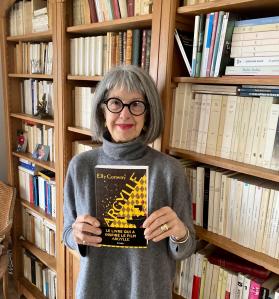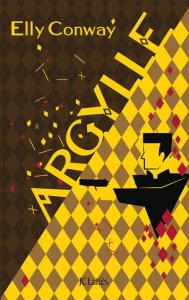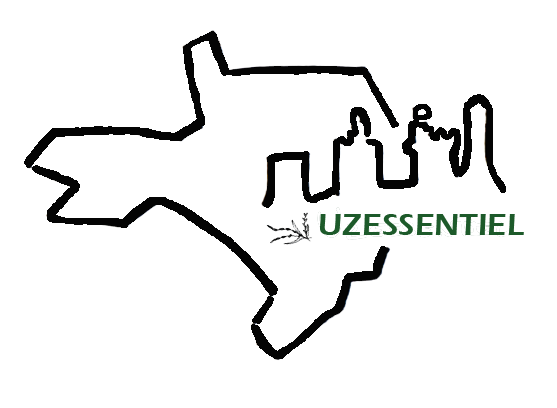Speaking about literary translation with Sophie Bastide-Folz
- Par nbesse
- Le 30/01/2024
- Dans Interviews and portraits
To mark the release in bookshops of Elly Conway Argylle's novel, adapted for the screen by Matthew Vaughn, UzEssentiel's editor had the pleasure to meet Sophie Bastide-Foltz, who translated the novel into French.
FR - A true enthusiast of the English language, Sophie Bastide-Foltz is responsible for numerous translations, including Les Devins by Canadian novelist Margaret Laurence (Editions Joëlle Losfeld), Les anagrammes de Varsovie (Editions Buchetchastel) and Lazare (Le cherche midi) by American writer Richard Zimler.
LET'S CHAT
 Hello Sophie,
Hello Sophie,
Delighted to welcome you to the Portrait section of the UzEssentiel.com blog,
Can you introduce yourself in a few words?
Well, what a difficult question, given that I've lived several lives! I started translating when I was 35. At that time I had lived in the United States for 5 years, between Los Angeles, San Francisco and New York, after working in shops in France.
In a way, you could say that the United States was the start of my future career as a translator. It was there that I wrote a number of freelance articles for academic newspapers and collaborate to the Journal Français d'Amérique in New York.
Back in France, it was a series of encounters that led me to my current activity. First of all, I met a philosopher who asked me to translate articles and trained me in the beautiful art of writing. This was followed by translations of books in a very journalistic style for French publisher Albin Michel. I then tried my hand at novels, again after meeting someone else.
The silence and solitude that translation requires were, and still are, a way of life that suits me perfectly.
English, American, what are the major differences for you between these languages?
While English is very literary, American is more spoken and colloquial, so the vocabulary is different.
Among all the books I've been translated, many novels were written by authors from many different countries: England, such as Je suis Pilgrim by Terry Hayes (J.C. Lattès); the United States, including Rouge sur Rouge by Edward Condon (Actes Sud); New Zealand, such as Histoire d'un fleuve en Nouvelle-Zélande by Jane Mander (Actes Sud); Australia, Pakistan, India, Bangladesh with Les Vaisseaux frères by novelist Tahmima Aman (Actes Sud); Ireland. I even had the chance to work on Le cercle du Kharma and Histoires en couleurs (both published by Actes Sud) by Bhutan's only novelist, Kunzang Choden.
Each country has its own characteristics and identity. Translation is therefore a constant learning process, involving figures of speech, vocabulary and, of course, context, which is essential to understanding a novel. I always find interesting and important to learn more about the place where the story takes place, the period, etc. It's very absorbing.
Do you always work on your own?
On my own in terms of the translation itself, yes, but my husband, Philippe Bastide, helps me to find the perfect tone for the novel. You have to realise that when you're writing it's often difficult to see what the problem is. So I read my work out loud to him and together we find the right words.
What's more, I often keep in touch with the author, sometimes meeting him, which gives me the advantage of knowing his way of thinking, his method. The relationship between writer and translator is unique.
You are immersed in the world of writing on a daily basis. Have you ever been tempted to start writing a novel yourself?
Like everyone else, the idea did crossed my mind! But my art, where I thrive, is translation.
To you prefer translated English to French or the other way round?
With a few rare exceptions, I think you can only translate a foreign text well into your mother tongue. So to answer your question, I prefer translating from English to French.
 You translated the French version of Argylle, the first novel by American author Elly Conway, which was a bestseller as soon as it came out in the US and hit French bookshops at the beginning of January. Have you got back to work yet?
You translated the French version of Argylle, the first novel by American author Elly Conway, which was a bestseller as soon as it came out in the US and hit French bookshops at the beginning of January. Have you got back to work yet?
Yes, I'm back at work already. Translation is a very intense experience, requiring 10 to 12 hours a day.
With each new book, you have to immerse yourself in a new world. It's an exciting and exhausting task, given that the longest novel I've ever translated was... 1,300 pages long. It's not just novelists who suffer from writer's cramp!
It's also a question of trust, on the part of a publisher and an author towards a professional writer.
Apart from your work as a translator, do you have any other activities?
I used to write for French magazines Magazine Littéraire and Le Point. I also wrote the presentation of an exhibition by the English painter Oliver Bevan (read our article), who lives in Uzès.
Recently, I worked on the French adaptation of Kelly Blatz's film Senior Love Triangle, which went on screen at Le Capitole cinema early January 2022 in the presence of the director. For me, translating screenplays is a sign of the revival of translation and offers a wide range of creative possibilities, totally different from books. It's a breath of fresh air in the world of literature, both exciting and exceptionally demanding, as the rules are radically different.
Would you like to add a comment?
I have to admit that I'm captivated by writing and translation. It's an every day joy and a wonderful profession, especially for a woman, allowing you to conciliate family life with a professional career.
Many thanks to Sophie Bastide-Foltz for her contribution to this article.
Among the many books whose French versions are the work of the translator are L'amant du volcan by Susan Sontag (Christian Bourgois), Art et outrage : Lettres et textes inédits by Henry Miller (Christian Bourgois), L'âge de la lumière by Whitney Scharer (L'observatoire), Madame Hemingway by Paula McLain (Le Livre de Poche), Les Falaises de Wangsisina by Pavan K. Varma (Actes Sud)...








